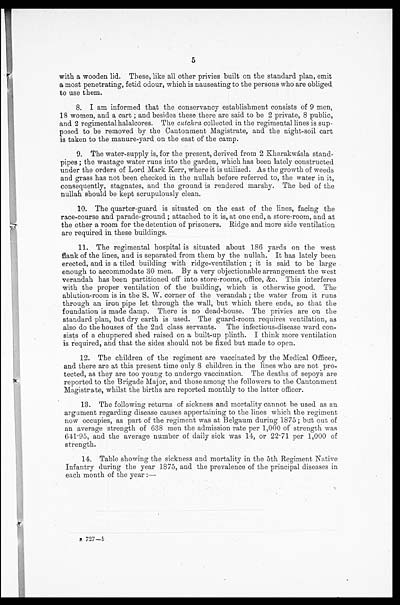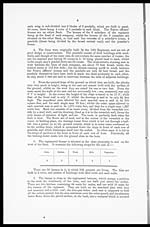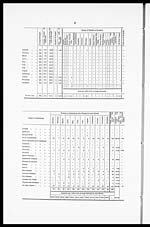Medicine - Institutions > Army health reports and medical documents > Reports on military cantonments and civil stations in the Presidency of Bombay inspected by the Sanitary Commissioner in the years 1875 and 1876 > Part I [i.e. 1] - Reports on military cantonments inspected in 1876
(162) Page 5
Download files
Individual page:
Thumbnail gallery: Grid view | List view

5
with a wooden lid. These, like all other privies built on the standard plan, emit
a most penetrating, fetid odour, which is nauseating to the persons who are obliged
to use them.
8. I am informed that the conservancy establishment consists of 9 men,
18 women, and a cart; and besides these there are said to be 2 private, 8 public,
and 2 regimental halalcores. The cutchra collected in the regimental lines is sup-
posed to be removed by the Cantonment Magistrate, and the night-soil cart
is taken to the manure-yard on the east of the camp.
9. The water-supply is, for the present, derived from 2 Kharakwàsla stand-
pipes; the wastage water runs into the garden, which has been lately constructed
under the orders of Lord Mark Kerr, where it is utilized. As the growth of weeds
and grass has not been checked in the nullah before referred to, the water in it,
consequently, stagnates, and the ground is rendered marshy. The bed of the
nullah should be kept scrupulously clean.
10. The quarter-guard is situated on the east of the lines, facing the
race-course and parade-ground; attached to it is, at one end, a store-room, and at
the other a room for the detention of prisoners. Ridge and more side ventilation
are required in these buildings.
11. The regimental hospital is situated about 186 yards on the west
flank of the lines, and is separated from them by the nullah. It has lately been
erected, and is a tiled building with, ridge-ventilation; it is said to be large
enough to accommodate 30 men. By a very objectionable arrangement the west
verandah has been partitioned off into store-rooms, office, &c. This interferes
with the proper ventilation of the building, which is otherwise good. The
ablution-room is in the S. W. corner of the verandah; the water from it runs
through an iron pipe let through the wall, but which there ends, so that the
foundation is made damp. There is no dead-house. The privies are on the
standard plan, but dry earth is used. The guard-room requires ventilation, as
also do the houses of the 2nd class servants. The infections-disease ward con-
sists of a chuppered shed raised on a built-up plinth. I think more ventilation
is required, and that the sides should not be fixed but made to open.
12. The children of the regiment are vaccinated by the Medical Officer,
and there are at this present time only 8 children in the lines who are not pro-
tected, as they are too young to undergo vaccination. The deaths of sepoys are
reported to the Brigade Major, and those among the followers to the Cantonment
Magistrate, whilst the births are reported monthly to the latter officer.
13. The following returns of sickness and mortality cannot be used as an
argument regarding disease causes appertaining to the lines which the regiment
now occupies, as part of the regiment was at Belgaum during 1875; but out of
an average strength of 638 men the admission rate per 1,000 of strength was
641.95, and the average number of daily sick was 14, or 22.71 per 1,000 of
strength.
14. Table showing the sickness and mortality in the 5th Regiment Native
Infantry during the year 1875, and the prevalence of the principal diseases in
each month of the year:—
B 727–b
Set display mode to: Large image | Zoom image | Transcription
Images and transcriptions on this page, including medium image downloads, may be used under the Creative Commons Attribution 4.0 International Licence unless otherwise stated. ![]()
| Permanent URL | https://digital.nls.uk/75009010 |
|---|




